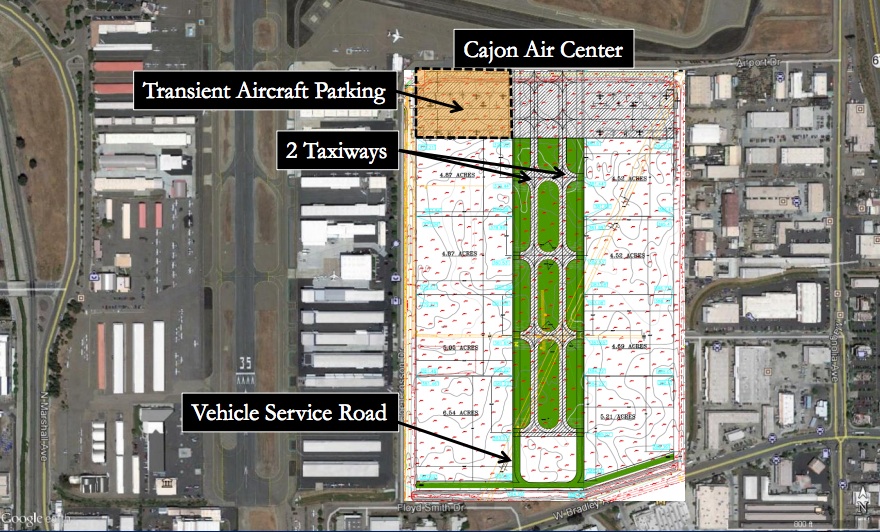Daily Business Report-Oct. 31, 2016
Northrop Grumman’s autonomous technology will be used to study the impacts of climate change on the polar bear population. (Courtesy Northrop Grumman)
Northrop Grumman Teams with San Diego
Zoo Global to Study Impacts of Climate
Change on Polar Bear Population
Northrop Grumman Corporation engineers and San Diego Zoo Global scientists are joining forces to gain a better understanding of the Arctic environment and the increasing threats to polar bears.
Employee teams competing in Northrop Grumman’s Wildlife Challenge are developing new approaches to autonomous flight technology, which San Diego Zoo Global scientists intend to use to expand their observation of climate change impacts to polar bear populations and sea ice habitats in far-off locations.

“As a global technology leader, we are always looking for ways to advance scientific research and discovery, even beyond the boundaries of our aerospace and defense expertise, and apply our knowledge to help solve other global challenges, such as conservation,” said Charlie Welch, technical lead, Wildlife Challenge, Northrop Grumman. “We can’t wait to get to work with the research team to help protect polar bears that are under significant threat for generations to come.”
The Wildlife Challenge is a competition for employees to develop a long-endurance autonomous system to help mitigate many of the challenges of operating in the Arctic, with the goal of providing San Diego Zoo Global researchers with new tools to answer critical research questions. Teams from across Northrop Grumman have been developing and testing their design solutions since August in preparation for the final test flights this past weekend. Collecting data in remote areas of the Artic is challenging due to the terrain and distant latitudes of wild polar populations – conservation experts think technology can help.
“Hands down the greatest threat to polar bears in the wild is climate change,” said Dr. Megan Owen, associate director of Applied Animal Ecology at San Diego Zoo Global. “Greenhouse gas emissions from human activity are having a dramatic and profound impact on the sea ice habitat that polar bears depend on to survive. While there has been a tremendous effort to study polar bears and changes to their habitat, one of the limiting factors to research is that the Arctic is an extreme environment that poses many, and historically insurmountable challenges, to work in; especially when the goal is to non-invasively study animals as they move over large areas.”
“I’m a biologist, not an engineer: I know the type of technology we need to answer critical research questions, but we don’t have the technological expertise to build the type of systems we need to operate in the Arctic,” said Nicholas Pilfold, postdoctoral associate in Applied Animal Ecology at the San Diego Zoo Institute for Conservation Research.
____________________________

Design for 34-Story Mixed-Use Downtown
High-Rise Gets Civic San Diego Board OK
The Civic San Diego board of directors has approved the design for Holland Partner Group’s proposed mixed-use development in East Village.
Designed by Carrier Johnson + Culture, the project consists of a 34-story residential tower, a four-story office building fronting Market Street, and a one-story retail building along Park Boulevard.
It also accounts for the preservation and renovation of the historic Remmen Building along Park Boulevard as a restaurant with outdoor seating to further activate the property’s accompanying public plaza.
The project contains 426 residential units with 20 percent of the total, 85 units, restricted for very low-income tenants. The project contains 52,096 square feet of office space, 22,641 square feet of retail space, and 560 subterranean parking spaces.
The site currently is home to “The Quartyard.” Discussions are in progress to maintain Quartyard’s involvement in activating the proposed open space for the project. The city anticipates construction to start in September 2018.
____________________________
Sen. Marty Block to Lead Hearing
On Future of Landmark Legislation

Sen. Marty Block (D-San Diego), chair of Senate Budget Subcommittee No. 1 dealing with education financing, will lead a Tuesday hearing on the progress and future of his 2014 legislation allowing community colleges to offer four-year degrees for the first time.
The subcommittee hearing is scheduled at 10 a.m. at the San Diego City College Corporate Education Center Auditorium, 1551 C St., San Diego.
Community colleges were granted the authority to offer the four-year degrees under SB 850, authored by Block. Testimony will focus on California’s high demand for bachelor degrees, San Diego workforce needs, and the implementation and future of SB 850. Block’s measure allowed for creation of a pilot program offering four-year degrees at 15 community colleges around the state, including Mesa College and Mira Costa College.
Upon passage of SB 850, California joined 22 other states that allow community colleges to offer baccalaureate degrees.
____________________________
Few Thriving Downtowns Include a Stadium
— For Good Reason
East Village envisions a future filled with arts and innovation, mixed-use residential, office and commercial development — a plan whose street-smart scale precludes a space-eating football stadium.
Read the Voice of San Diego story
____________________________
Tanker Constitution Completes
Successful Tests of San Diego Coast
The ECO Class tanker Constitution returned to the NASSCO shipyard on Oct. 26 following successful tests and trials off the coast of San Diego.
The Constitution is a 610-foot, 50,000-ton, and LNG-conversion-ready product tanker with a 330,000 barrel cargo capacity. The new ECO Class tanker symbolizes the transformation of the U.S. shipping industry toward cleaner, more fuel-efficient modes of transporting product.
____________________________
Cubic Awarded $12.7M Contract for
Atlanta Fare Collection Maintenance Services
Cubic Transportation Systems, a business unit of Cubic Corporation, has been awarded a $12.7 million, two-year contract extension from the Metropolitan Atlanta Rapid Transit Authority for Automated Fare Collection maintenance services.
The contract also includes options for an upgrade path to support future updates, which could increase the value to $52 million if all options are exercised.
Cubic designed and delivered MARTA’s Breeze Card, a card-based AFC system that utilizes Cubic’s smart card ticketing technology, in 2006. Since then, Cubic has been providing maintenance and onsite support to MARTA and maintenance support to its regional partners: the Georgia Regional Transportation Authority, Cobb and Gwinnett counties and the Atlanta Streetcar.
The Breeze Card system currently generates more than 106 million rides annually.
____________________________
Sally Ride’s Legacy Lives On
In New Scripps Research Vessel
The legacy of astronaut Sally Ride was celebrated Friday as a new research vessel named in her honor was commissioned on the downtown waterfront.
The 238-foot-long R/VC Sally Ride, owned by the Navy and operated by the Scripps Institution of Oceanography, will embark on its first mission next month, when it conducts a study of the California Current.
Margaret Leinen, vice chancellor for marine sciences at UC San Diego, said the mission of the ship is to “understand and protect the planet” while also supporting Naval research.
“This ship is magnificently prepared to do that,” she said. “Oceanography is critical for our national security as well.”
Rep. Susan Davis, one of the political leaders speaking at the ceremony, said the ship will be in inspiration to women in science like its namesake. “Sally Ride was a role model to all of us,” she said.
The vessel was built in Anacortes, WA, and delivered to Scripps last month. It is the institution’s first new vessel since the Roger Revelle more than 20 years ago.
____________________________

Officials to Break Ground on $6.5 Million
Cajon Air Center at Gillespie Field
County and community members are to break ground this morning on the first phase of the Cajon Air Center, a $6.5 million, 70-acre, multi-phase redevelopment project to turn Gillespie Field in El Cajon into an aviation industry hub. The ceremony is at 10: 30 a.m. at Joe Crosson Drive and Airport Drive, El Cajon.
The Cajon Air Center is a multi-phased development which includes construction of an underground detention basin; drainage improvements; utility relocation; roadway improvements; new apron area and taxiways; and grading of buildable aviation-use lots.
The first phase consists of grading and installing an underground detention basin.
The Federal Aviation Administration (FAA) has offered a 90 percent match for the total project cost for Phase I, with the remaining funding coming from the county’s Airport Enterprise Fund. Phasing and timing of the remaining phases will depend on the FAA’s funding priorities. Following completion of the infrastructure, up to 55 acres will be available to be leased for private development of aviation facilities.
____________________________
North San Diego Business Chamber
Sponsors China Tour
The North San Diego Business Chamber is sponsoring a Chamber China Tour April 17-25, 2017, and will hold an informational meeting Tuesday at 5:30 p.m. at chamber offices at 10875 Rancho Bernardo Road, Suite 104, San Diego.
The $2,099 cost includes: Air Fare, 4 and 5 Star Hotels, Three Full Meals Daily, English Speaking Tour Guide, Deluxe Tour Bus, Fees for All tours on Itinerary, Airport Taxes and Fuel Surcharges. For an additional $200, travelers can choose an alternative itinerary which goes to Xi’an to see the Terra-Cotta Warriors. Click here for the itinerary



